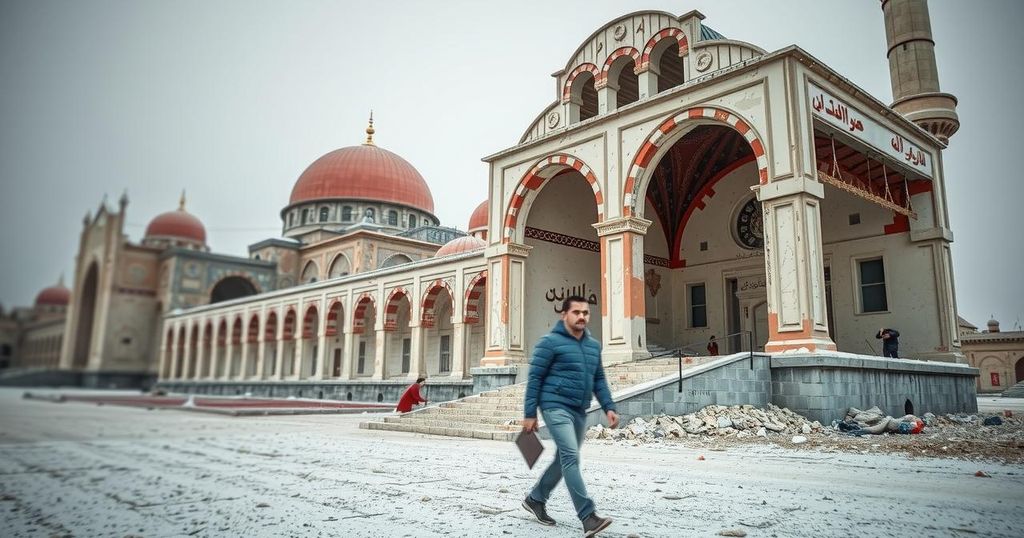Navigating the Complexities of Border Life Amidst Syrian Turmoil

In an intricate reflection of the Syrian conflict, families traverse the border between Syria and Lebanon, showcasing the duality of hope and fear. Individuals like Asa’ad Zain al-Deen and Anas Mazloum personify the difficulties of seeking safety while wrestling with the past. As returning families contend with newfound leadership and lingering uncertainty, societal tensions and narratives of resilience emerge, painting a complex picture of life on the frontlines of change.
The crossing between Syria and Lebanon reveals a poignant picture of families navigating life amidst ongoing turmoil. A vibrant yet weary scene unfolds at the border, where individuals like Asa’ad Zain al-Deen and Anas Mazloum embody the struggle between seeking safety and searching for family. Deen’s departure from Lebanon highlights a family’s tenuous grasp on stability as they return to Syria, their safety now uncertain amidst looming chaos. Meanwhile, Mazloum, seeking his brother who disappeared under the brutal regime, represents the desperation faced by many. The societal tensions are palpable, with varying opinions on the power dynamics as Deen contemplates the future under the new leadership of Ahmed al-Sharaa. Amidst mixed feelings about returning to Syria, community members express cautious hope toward a change in governance, while grappling with a history steeped in violence and division. This chaotic landscape embodies the intersectionality and duality of hope and fear that defines this troubled border region, as residents adapt to a reality rife with sectarianism and retribution.
Specific incidents indicate the complexity of rebuilding lives in this fractured environment. In conversations with individuals from both sides of the border, one can observe varying perceptions of Jalani’s influence and the implications for the future. Individuals like Khalil Abed al-Nabi recount the destruction endured by their neighborhoods while relaying an unexpected camaraderie forged in the midst of conflict. The hope that this newfound liberation might endure contrasts sharply with the deep-rooted fears that accompanied the regime’s oppressive rule.
As families weigh the risks and potential of their chosen paths, the tangible impact of governance reignites crucial concerns regarding security, identity, and communal solidarity, capturing the turbulent emotions of a region rife with uncertainty.
The ongoing Syrian civil war necessitates mass migrations and return journeys as families seek safety and stability. The intricate border area between Syria and Lebanon is marked by historical grievances and sectarian division. Numerous individuals have fled to Lebanon to escape the regime of President Bashar al-Assad and the atrocities associated with it. Many are now returning to Syria, driven by a desire to reunite with family or find stability amidst shifting power dynamics. This movement reflects broader themes of familial bonds, the fluctuating notion of home, identity in crisis, and the constant struggle against oppressive forces. Understanding the personal narratives juxtaposed with political realities provides insight into the complexities of life within a region recovering from prolonged conflict.
The narratives of Asa’ad Zain al-Deen and Anas Mazloum underscore the complex layers of human experience within the Syrian conflict. Their experiences illustrate a broader reality where individuals are caught between the hope for a safer future and the haunting echoes of past traumas. As families navigate these treacherous waters, balancing their desires for reunion with prevailing fears, the overarching narratives continue to unveil the enduring hardships faced in a fractured society. The dialogue among residents reveals a microcosm of the struggle for collective identity and humanity in a region marred by division and conflict.
Original Source: www.newyorker.com








